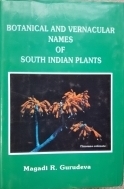
Survival of human race on earth depends entirely on plants. Naturally, from ancient times, man became curious about the life and uses of plants which led to the study of plants in various ways. In the last five decades, this study has developed into several important fields like bio-diversity, Food and Agriculture, Ecology, Environment and Health, Tissue Culture, Genetic Engineering, Hydroponics, to name a few.
It is inevitable for us to be familiar with the plants surrounding us and the plants which are essential for our survival. However, plants are recognised by us, to begin with, in our own vernacular or folk name. In a country like India, where diversity is vast, several communities live in different parts of the country. The plants surrounding these diverse communities and used by them are recognised in their own language by a vernacular or folk name.
Thus, a plant with one botanical name is known by many vernacular or folk names. The value of recognising a plant with the help of a vernacular or folk name becomes clear when it is botanically identified and its usefulness to society is established.
Unfortunately, limited literature exists in which all such vernacular or folk names are available in one document. Hence, it is necessary to have Compendiums of Botanical and Vernacular names of plants. To achieve this objective, this book by Dr. Magadi R. Gurudev from Department of Botany, Visveswarapura College of Science, Bangalore is a valuable contribution.
This compendium provides 2,222 plant names with English (2,748), Hindi (3,466), Kannada (7,472), Konkani (511), Malayalam (2,394), Marati (2,400), Sanskrit (8,866), Tamil (5,863), Telugu (4,666) and Tulu (587) names. Thus, it is useful for both, a layman and a scientist.
